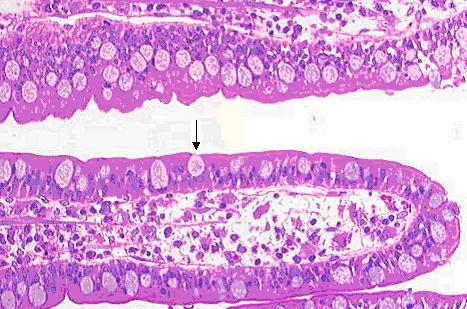Playlist
Show Playlist
Hide Playlist
Exocrine Glands
-
Slides 02 Types of Tissues Meyer.pdf
-
Reference List Histology.pdf
-
Download Lecture Overview
00:01 In this lecture, I am going to provide an overview of the structure of exocrine glands in the body and some indication of the function of these glands. And I am also going to deal with in more detail where appropriate when I review the organ systems in the later lectures. 00:24 Exocrine glands are very important in a number of different organ systems and it's important that first of all you understand what a gland is and know that basically these glands form two major categories. They are the serous secreting or mucous secreting. You need to also understand the way in which glands secrete the components that they have made and how we classify glands or name them. And most importantly also it is important to have some understanding of the duct system of these glands because these ducts within some glands modify the secretion product produced via the secretory cells. Now, there are a number of different types of glands. As I explained I am mainly going to concentrate in today's lecture on the exocrine glands. 01:25 They are glands that synthesize, then secrete their products onto the surface. 01:34 They do so either directly such as we see in goblet cells lining some epithelia or they secrete their product via a tube called the duct or a conduit. And as I mentioned earlier, some of these ducts modify the secretion of the glands. There are also endocrine glands. 02:00 These are glands that synthesize their products, but then they secrete them into the extracellular space around the glands. Because during development, when the epithelium invaginated into underlying connective tissue, the connection between the surface of the epithelium and the secretory invaginated epithelial cells is lost. And so there is no way for these glands to secrete their products. So therefore, they secrete them into extracellular space and then those secretory products move into the blood stream and delivered to target organs often a long way away from where these glands actually synthesized the material. Another way in which glands are classified or named is because often some cells can secrete products that affect their neighbors, and these are called paracrine glands. These paracrine glands secrete their products into the underlying interstitial space and that diffuses to nearby cells and affects their function. We will do with those in another lecture. So basically the types of glands are really classified on the way in which they secrete their products and also the way in which those products reach their target tissues, either through a duct as in exocrine glands or via the blood in endocrine glands or just via diffusion along local interstitial space to affect neighbour cells. It is important to understand how glands release
About the Lecture
The lecture Exocrine Glands by Geoffrey Meyer, PhD is from the course Epithelial Tissue.
Included Quiz Questions
Which of the following is TRUE regarding exocrine glands?
- They often deliver their secretions via a duct.
- They mostly secrete products that directly affect adjacent epithelial cells.
- They mostly secrete mucus.
- They affect target tissues via the bloodstream.
Endocrine glands secrete their products primarily into which of the following?
- Blood
- Target organ
- Ducts
- Lymph
- Adjacent tissue
Paracrine signaling reaches nearby cells through which of the following mechanisms?
- Diffusion
- Ducts
- Blood
- Lymph
- Active membrane transport
Customer reviews
5,0 of 5 stars
| 5 Stars |
|
1 |
| 4 Stars |
|
0 |
| 3 Stars |
|
0 |
| 2 Stars |
|
0 |
| 1 Star |
|
0 |
Because it has all the information i need and am understanding easily




